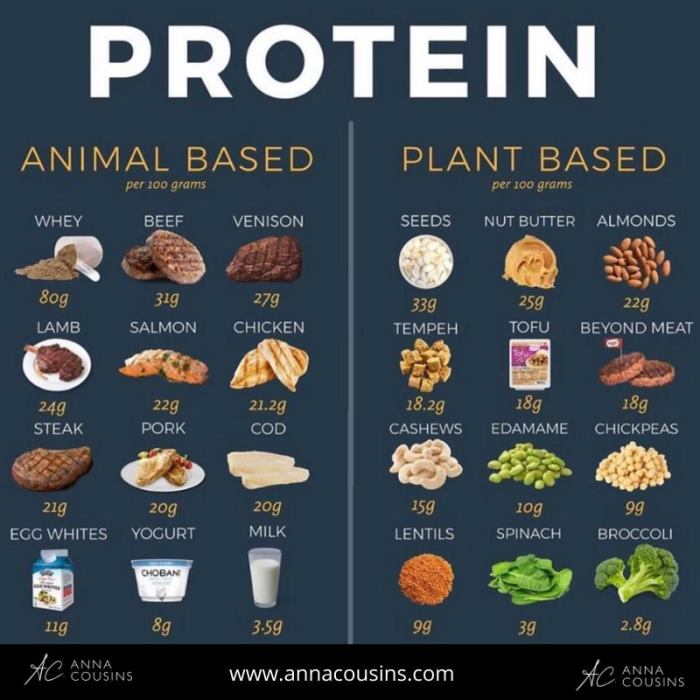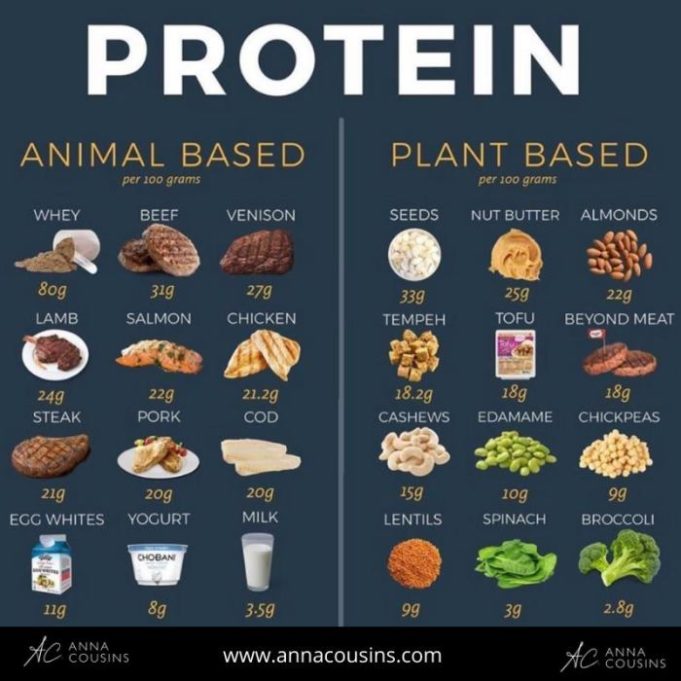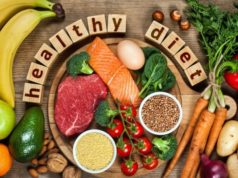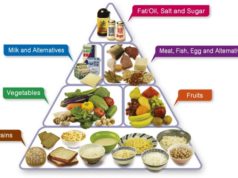How to add protein to diet – How to add protein to your diet is a question many people ask, seeking to optimize their health and well-being. Protein is a vital macronutrient that plays a crucial role in various bodily functions, from building and repairing tissues to supporting a healthy immune system. Understanding the importance of protein and how to incorporate it effectively into your daily meals is essential for achieving your health goals.
This guide will delve into the essential aspects of protein consumption, covering topics like recommended daily intake, protein-rich food sources, and practical strategies for incorporating protein into your meals and snacks. Whether you’re looking to build muscle, maintain a healthy weight, or simply ensure you’re getting enough protein, this comprehensive guide will equip you with the knowledge and tools you need to make informed choices about your protein intake.
Understanding Protein Needs
Protein is an essential nutrient that plays a vital role in numerous bodily functions. It is a building block for tissues, organs, and enzymes, and it is crucial for maintaining a healthy immune system. In this section, we will explore the importance of protein in a balanced diet and delve into the recommended daily protein intake for different individuals.
Recommended Daily Protein Intake
The recommended daily protein intake varies based on factors such as age, activity level, and health conditions. Here is a breakdown of the general guidelines:
- Infants (0-6 months): 1.5 grams per kilogram of body weight
- Infants (7-12 months): 1.2 grams per kilogram of body weight
- Children (1-3 years): 1.1 grams per kilogram of body weight
- Children (4-8 years): 0.95 grams per kilogram of body weight
- Children (9-13 years): 0.95 grams per kilogram of body weight
- Teenagers (14-18 years): 0.85 grams per kilogram of body weight (males), 0.75 grams per kilogram of body weight (females)
- Adults (19-70 years): 0.8 grams per kilogram of body weight
- Older Adults (71 years and older): 1 gram per kilogram of body weight
It is important to note that these are general recommendations. Individuals with specific health conditions, such as kidney disease or liver disease, may require adjusted protein intake. Consulting a healthcare professional or registered dietitian is recommended for personalized guidance.
Protein’s Role in Muscle Growth, Repair, and Maintenance
Protein is crucial for muscle growth, repair, and maintenance. During exercise, muscle fibers experience microscopic tears. Protein provides the building blocks for repairing these tears and building new muscle tissue. This process is particularly important for athletes and individuals engaged in regular strength training.
“Protein is essential for muscle growth, repair, and maintenance, as it provides the building blocks for new muscle tissue.”
Consequences of Protein Deficiency
Protein deficiency can lead to various health issues, including:
- Muscle wasting: Lack of protein can cause muscle breakdown and loss of muscle mass, leading to weakness and fatigue.
- Impaired immune function: Protein is essential for the production of antibodies, which are crucial for fighting off infections. Protein deficiency can weaken the immune system, making individuals more susceptible to illness.
- Slower wound healing: Protein is needed for the production of collagen, a protein that helps in tissue repair. Protein deficiency can delay wound healing and increase the risk of infections.
- Fluid retention: Protein plays a role in maintaining fluid balance in the body. Protein deficiency can lead to fluid retention, causing swelling in the extremities.
Identifying Protein-Rich Foods
Knowing how much protein you need is the first step in ensuring you get enough. But the next step is to identify protein-rich foods that can help you meet your goals. This section will explore various protein sources, their benefits, and drawbacks, providing you with a comprehensive guide to incorporating protein into your diet.
Animal-Based Protein Sources, How to add protein to diet
Animal-based protein sources are generally considered complete proteins, meaning they contain all nine essential amino acids your body needs. Here are some common examples:
- Meat: Beef, chicken, pork, lamb, and turkey are all excellent sources of protein. Choose lean cuts to minimize saturated fat intake.
- Fish and Seafood: Salmon, tuna, cod, shrimp, and shellfish are rich in protein and omega-3 fatty acids, which are beneficial for heart health.
- Eggs: Eggs are a versatile and affordable source of protein, containing all essential amino acids.
- Dairy Products: Milk, yogurt, cheese, and cottage cheese are good sources of protein, calcium, and other nutrients.
Plant-Based Protein Sources
Plant-based protein sources can be equally nutritious and diverse. While they may not contain all essential amino acids in a single source, combining different plant proteins throughout the day can ensure you get a complete amino acid profile.
- Legumes: Beans, lentils, chickpeas, and peas are excellent sources of protein, fiber, and other nutrients.
- Nuts and Seeds: Almonds, walnuts, sunflower seeds, chia seeds, and flax seeds are packed with protein, healthy fats, and fiber.
- Soy Products: Tofu, tempeh, edamame, and soy milk are complete protein sources that offer a variety of textures and flavors.
- Whole Grains: Quinoa, brown rice, and oats are good sources of protein and fiber.
Lean Protein Sources
Lean protein sources are those that are lower in fat and calories, making them a healthier choice for weight management. Some examples include:
- Chicken Breast: Skinless chicken breast is a lean and versatile protein source.
- Fish: Salmon, tuna, and cod are lean fish options rich in omega-3 fatty acids.
- Turkey Breast: Ground turkey breast is a lean alternative to ground beef.
- Beans: Black beans, kidney beans, and chickpeas are low in fat and high in protein.
- Lentils: Lentils are a good source of protein and fiber.
Nutritional Benefits and Drawbacks of Protein Sources
Different protein sources offer varying nutritional benefits and drawbacks.
Animal-Based Protein
- Benefits: Complete protein, rich in essential amino acids, often contain other nutrients like iron, zinc, and vitamin B12.
- Drawbacks: Can be high in saturated fat, especially red meat, may contribute to environmental concerns due to animal agriculture.
Plant-Based Protein
- Benefits: Typically lower in saturated fat, often high in fiber and other nutrients, can be more sustainable and environmentally friendly.
- Drawbacks: May not contain all essential amino acids in a single source, may require combining different plant proteins throughout the day to get a complete profile.
Protein Content of Various Foods per Serving
The following table provides a comparison of the protein content of various foods per serving:
| Food | Serving Size | Protein (grams) |
|---|---|---|
| Chicken Breast (skinless) | 3 ounces | 27 |
| Salmon (cooked) | 3 ounces | 20 |
| Eggs (large) | 1 | 6 |
| Lentils (cooked) | 1/2 cup | 18 |
| Tofu (firm) | 1/2 cup | 20 |
| Almonds | 1 ounce | 6 |
| Quinoa (cooked) | 1/2 cup | 4 |
Incorporating Protein into Meals: How To Add Protein To Diet
Now that you understand your protein needs and have identified protein-rich foods, let’s dive into how to effectively incorporate protein into your daily meals and snacks.
Sample Meal Plan with Protein-Rich Options
A well-balanced meal plan should include protein-rich options at breakfast, lunch, and dinner. Here’s a sample meal plan to illustrate this concept:
- Breakfast: Oatmeal with berries and a scoop of protein powder or Greek yogurt with nuts and seeds.
- Lunch: A salad with grilled chicken or fish, or a whole-wheat wrap with hummus and vegetables.
- Dinner: Baked salmon with roasted vegetables and quinoa, or lentil soup with whole-wheat bread.
Strategies for Adding Protein to Snacks
Snacks are a great opportunity to boost your protein intake throughout the day.
- Protein Bars: Opt for bars that are high in protein and low in added sugar.
- Trail Mix: Combine nuts, seeds, and dried fruit for a protein-packed snack.
- Greek Yogurt with Fruit: A simple and delicious way to get a protein boost.
- Hard-Boiled Eggs: A convenient and portable source of protein.
- Cottage Cheese: A low-calorie, high-protein snack that can be enjoyed on its own or with fruit.
Creative Ideas for Incorporating Protein
- Smoothies: Blend in protein powder, nut butter, or Greek yogurt for a creamy and nutritious smoothie.
- Salads: Add grilled chicken, fish, beans, or lentils to your salads for extra protein.
- Soups: Use beans, lentils, or chickpeas to boost the protein content of your soups.
- Pasta Dishes: Add protein to your pasta dishes by using meat, seafood, beans, or lentils.
- Breakfast Bowls: Combine oatmeal, Greek yogurt, chia seeds, and fruit for a protein-packed breakfast bowl.
Importance of Portion Control and Meal Frequency
Portion control and meal frequency play crucial roles in optimizing your protein intake.
“Eating smaller, more frequent meals throughout the day can help ensure you are getting enough protein without overdoing it in one sitting.”
- Portion Control: Pay attention to the recommended serving sizes for protein-rich foods. Overconsumption can lead to weight gain and other health issues.
- Meal Frequency: Aim for 3-4 meals and 1-2 snacks per day to keep your protein intake consistent and support muscle growth and repair.
Practical Tips for Protein Consumption
Increasing your protein intake doesn’t have to be complicated or restrictive. Here are some practical tips to help you maximize your protein intake without sacrificing other important dietary needs.
Benefits and Drawbacks of Protein Supplements
Protein supplements can be a convenient way to boost your protein intake, but it’s important to understand their benefits and drawbacks.
- Benefits: Protein supplements can be a convenient and efficient way to increase your protein intake, especially if you’re struggling to meet your needs through food alone. They can also be helpful for athletes and those who are trying to build muscle mass.
- Drawbacks: Protein supplements can be expensive and may not be necessary for everyone. Some people may also experience digestive issues or other side effects from consuming too much protein.
It’s important to note that protein supplements should not be used as a substitute for a healthy, balanced diet. If you’re considering using protein supplements, talk to your doctor or a registered dietitian to ensure that they’re right for you.
Tracking Protein Intake
Tracking your protein intake can help you ensure that you’re getting enough to meet your needs.
- Food Diaries: Keeping a food diary is a simple way to track your protein intake. You can write down everything you eat and drink, along with the approximate amount of protein in each food.
- Apps: There are many apps available that can help you track your protein intake. These apps typically allow you to scan barcodes, search for food items, and track your protein intake over time.
Combining Protein Sources
Combining different protein sources can help you get a wider range of amino acids, which are the building blocks of protein.
- Complementary Proteins: Complementary proteins are two or more incomplete proteins that, when combined, provide all the essential amino acids. For example, beans and rice are complementary proteins.
- Variety: Include a variety of protein sources in your diet, such as lean meats, poultry, fish, eggs, beans, lentils, nuts, and seeds.
Tip: Aim to include a protein source at each meal and snack.
Protein and Specific Dietary Needs

Meeting your protein needs can be a bit more complex for individuals following specific diets or dealing with allergies. This section will delve into how to ensure adequate protein intake for vegetarians, vegans, and those with allergies, while also addressing the protein needs of pregnant and breastfeeding women.
Protein for Vegetarians and Vegans
Vegetarians and vegans can easily meet their protein needs by including a variety of plant-based protein sources in their diets. It’s important to note that the protein requirements for vegetarians and vegans are the same as for those who consume animal products.
- Legumes: Lentils, beans, chickpeas, and peas are excellent sources of protein. They also provide fiber, iron, and other essential nutrients.
- Nuts and Seeds: Almonds, walnuts, cashews, sunflower seeds, and pumpkin seeds are packed with protein, healthy fats, and fiber.
- Soy Products: Tofu, tempeh, and edamame are complete protein sources, meaning they contain all nine essential amino acids.
- Whole Grains: Quinoa, brown rice, and oats are good sources of protein and fiber.
- Vegetables: While vegetables are generally lower in protein than other sources, broccoli, spinach, and asparagus contain a decent amount.
Protein for Individuals with Allergies
Individuals with food allergies need to be careful about choosing protein sources. Common food allergies include dairy, eggs, nuts, soy, wheat, and shellfish.
- Dairy Allergies: Individuals with dairy allergies can choose plant-based milk alternatives like almond milk, soy milk, or oat milk.
- Egg Allergies: Egg-free protein sources include tofu, tempeh, legumes, and nuts (depending on the specific allergy).
- Nut Allergies: Individuals with nut allergies need to avoid nuts and products containing nuts. Other protein sources include seeds, legumes, and soy products.
- Soy Allergies: Soy-free protein sources include nuts, seeds, legumes, and dairy products (if not allergic).
- Wheat Allergies: Wheat-free protein sources include gluten-free grains like quinoa, rice, and oats.
- Shellfish Allergies: Individuals with shellfish allergies need to avoid all types of shellfish. Other protein sources include meat, poultry, fish, and plant-based options.
Protein Supplements for Specific Needs
Protein supplements can be helpful for individuals who struggle to meet their protein needs through diet alone, especially those with specific dietary restrictions or increased protein requirements.
- Whey Protein: Whey protein is a popular choice for athletes and bodybuilders. It is derived from milk and is a complete protein source. However, it is not suitable for individuals with dairy allergies.
- Casein Protein: Casein protein is another milk-derived protein, but it digests slower than whey protein. It is often used for overnight protein intake.
- Soy Protein: Soy protein is a plant-based complete protein source. It is a good option for vegetarians and vegans, but it is not suitable for individuals with soy allergies.
- Pea Protein: Pea protein is a plant-based protein derived from peas. It is a good option for individuals with soy, dairy, and nut allergies.
- Brown Rice Protein: Brown rice protein is a plant-based protein derived from brown rice. It is a good option for individuals with gluten allergies.
Protein During Pregnancy and Breastfeeding
During pregnancy and breastfeeding, protein requirements increase to support the growth and development of the fetus and baby.
The recommended daily protein intake for pregnant women is 71 grams, and for breastfeeding women is 75 grams.
- Include a Variety of Protein Sources: Aim for a balanced intake of lean meats, poultry, fish, eggs, legumes, nuts, and seeds.
- Prioritize High-Quality Protein: Choose protein sources that are low in saturated fat and high in essential nutrients.
- Listen to Your Body: If you experience nausea or vomiting during pregnancy, choose smaller, more frequent meals.
Conclusive Thoughts
By understanding your protein needs, exploring diverse protein sources, and incorporating them strategically into your diet, you can achieve optimal protein intake and reap its numerous benefits. Remember, protein is an essential building block for a healthy body and mind. Embrace a balanced approach to protein consumption, and you’ll be well on your way to a healthier and more fulfilling life.
Helpful Answers
What are some quick and easy ways to add protein to my meals?
You can easily add protein to your meals by incorporating ingredients like eggs, nuts, seeds, Greek yogurt, or protein powder. For instance, add a handful of nuts to your cereal or oatmeal, sprinkle chia seeds on your salads, or blend protein powder into your smoothies.
How much protein should I consume after a workout?
Aim for 20-30 grams of protein within 30-60 minutes after your workout to support muscle recovery and growth. Good sources include lean meats, fish, poultry, eggs, and protein shakes.
Are protein bars a healthy way to get protein?
Protein bars can be a convenient source of protein, but it’s important to choose bars that are low in sugar and processed ingredients. Opt for bars with whole food ingredients like nuts, seeds, and fruits.
Can I get enough protein on a vegan diet?
Absolutely! Plant-based protein sources like lentils, beans, tofu, tempeh, and quinoa can provide ample protein for a vegan diet. Combining various plant-based sources throughout the day ensures you meet your protein needs.
Adding protein to your diet can be as simple as swapping out your usual breakfast cereal for a protein-packed option, or incorporating more lean meats and fish into your meals. But if you’re looking for a more structured approach, consider exploring the if diet program, which provides a personalized meal plan designed to help you achieve your protein goals.
This diet focuses on incorporating protein-rich foods into every meal, ensuring you get the necessary nutrients for muscle growth and overall health.
Adding protein to your diet can be as simple as incorporating more lean meats, fish, or beans into your meals. But if you’re looking for a quick and easy way to boost your protein intake, consider adding a protein shake to your routine.
You might be wondering if you can enjoy a protein shake with your favorite diet soda, and the answer to that question is a bit more complex than you might think. Check out this article to learn more about whether is diet coke caffeine free.
Once you’ve got your caffeine fix sorted, you can focus on getting your protein fix with a delicious shake!
Adding protein to your diet can be as simple as swapping out your usual breakfast cereal for a protein-packed smoothie or choosing lean meats over processed foods. If you’re looking for a more structured approach, you might want to explore the keto diet, which emphasizes high-fat, moderate-protein meals.
You can find a comprehensive guide on how to start a keto diet at home here. Once you’ve got the basics down, remember that plenty of protein-rich foods fit perfectly into a keto lifestyle, like fatty fish, eggs, and nuts.
























